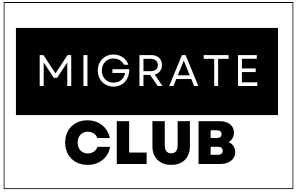New Zealand has implemented stricter rules for work visas, specifically targeting certain categories of Accredited Employer Work Visa (AEWV) holders. These new regulations reflect the government’s ongoing efforts to manage immigration more sustainably and ensure that the immigration system supports the country’s economic needs.
According to an announcement by Immigration New Zealand, individuals holding AEWVs in jobs classified at levels 4 and 5 by the Australian and New Zealand Standard Classification of Occupations (ANZSCO) and without a pathway to residency can no longer sponsor work, visitor, or student visa applications for their partners and dependent children. This change is part of a broader suite of amendments to the AEWV scheme introduced earlier this year, reverting the settings to those similar to the previous Essential Skills Work Visa.
Key Points
Independent Visa Applications
Partners and dependent children of AEWV holders can still apply independently for New Zealand visas, such as AEWVs or international student visas, if they meet the necessary requirements. This provision ensures that family members are not entirely barred from entering New Zealand but must meet specific criteria independently.
Effective Date and Exemptions
The new rules took effect on June 26. The government has provided certain exemptions to ensure that the changes do not unfairly impact individuals who have already made plans based on the previous rules. The new regulations will not affect:
- Individuals already holding visas as partners or dependent children.
- AEWV holders in ANZSCO level 4 and 5 roles with a pathway to residency, such as those under the Green List or sector agreements with residence pathways.
- Individuals earning at least 1.5 times the average salary threshold for the Skilled Migrant Category.
Broader Immigration Strategy
These changes are part of a broader set of amendments to the AEWV scheme introduced earlier this year. The goal is to revert settings to those similar to the previous Essential Skills Work Visa, which aimed to better align immigration policies with the labor market needs.
Language Requirements and Skill Levels
This move is in line with the New Zealand government’s efforts to address unsustainable migration. On April 7, additional changes were introduced, including a language requirement for foreigners applying for low-skilled jobs under ANZSCO levels 4 and 5. The language requirement aims to ensure that foreign workers understand their rights and can effectively address potential issues with their employers. This change is expected to improve communication and integration of foreign workers into the workplace and broader community.
Maximum Stay and Experience Requirements
Moreover, the new rules reduce the maximum stay for low-skilled workers from five years to three years and set minimum skill and work experience requirements for most roles. These adjustments are intended to ensure that the immigration system remains fair and that the job opportunities for New Zealanders are not adversely affected by an influx of temporary workers.
Government’s Goals
Despite these tighter restrictions, New Zealand continues to aim at attracting and retaining highly skilled foreign workers, especially in sectors facing shortages, such as secondary education. The government recognizes the importance of skilled migrants in contributing to the country’s economic growth and addressing skill shortages in critical industries.
Intelligent Immigration System
Immigration Minister Erica Stanford emphasized the need for a more intelligent immigration system that regulates net migration and adapts to the evolving economic landscape. She outlined the objectives of the reforms, focusing on several key areas:
- Attracting top talent: Ensuring that New Zealand remains an attractive destination for highly skilled professionals who can contribute significantly to the economy.
- Revitalizing international education: Encouraging international students to study in New Zealand, which not only benefits educational institutions but also contributes to the cultural diversity and economic vitality of the country.
- Ensuring self-sufficiency and sustainability: Balancing the needs of the local labor market with the influx of foreign workers to ensure that New Zealand’s economy remains robust and sustainable.
- Improving risk management: Implementing measures to mitigate potential risks associated with immigration, such as exploitation of workers and pressures on public services.
Immigration Statistics
In the first three months of 2024, over one million people entered New Zealand. The majority of these arrivals were on visitor visas (602,404), followed by Australians (274,417), residents (158,867), and workers (51,338). These statistics highlight the high level of interest in New Zealand as a destination for travel, work, and residency.
Conclusion
New Zealand’s new visa regulations reflect the government’s commitment to sustainable immigration while still welcoming skilled foreign workers to fill critical roles. These changes aim to balance the need for economic growth with the challenges of managing migration effectively. By tightening the rules for certain AEWV holders, the government seeks to ensure that the immigration system supports New Zealand’s long-term economic and social objectives.
Broader Implications
The recent changes to New Zealand’s visa regulations also have broader implications for the country’s immigration policy and labor market dynamics. These measures are designed to ensure that the immigration system is more responsive to the needs of the economy while protecting the interests of local workers.
Economic Impact
The restrictions on AEWV holders in low-skilled jobs are expected to reduce the number of temporary workers in the country. This could lead to a tightening of the labor market in certain sectors, potentially driving up wages and improving working conditions for local workers. However, businesses that rely on low-skilled migrant labor may face challenges in recruiting sufficient staff, which could impact their operations and profitability.
Social Impact
The emphasis on higher language proficiency and skill levels aims to improve the integration of foreign workers into New Zealand society. Better language skills will enable migrants to communicate more effectively, reducing the risk of misunderstandings and conflicts in the workplace. This can also enhance their ability to participate in community life and access public services.
Future Outlook
Looking ahead, the New Zealand government is likely to continue refining its immigration policies to ensure they align with the country’s evolving economic and social needs. The focus will remain on attracting skilled migrants who can contribute to key industries while managing the overall level of immigration to prevent undue pressure on infrastructure and public services.
Final Thoughts
Overall, these changes represent a significant shift in New Zealand’s approach to managing work visas and immigration. By targeting specific categories of AEWV holders and introducing stricter requirements, the government aims to create a more sustainable and balanced immigration system. This approach is intended to support New Zealand’s economic growth while addressing the challenges associated with high levels of migration.

























